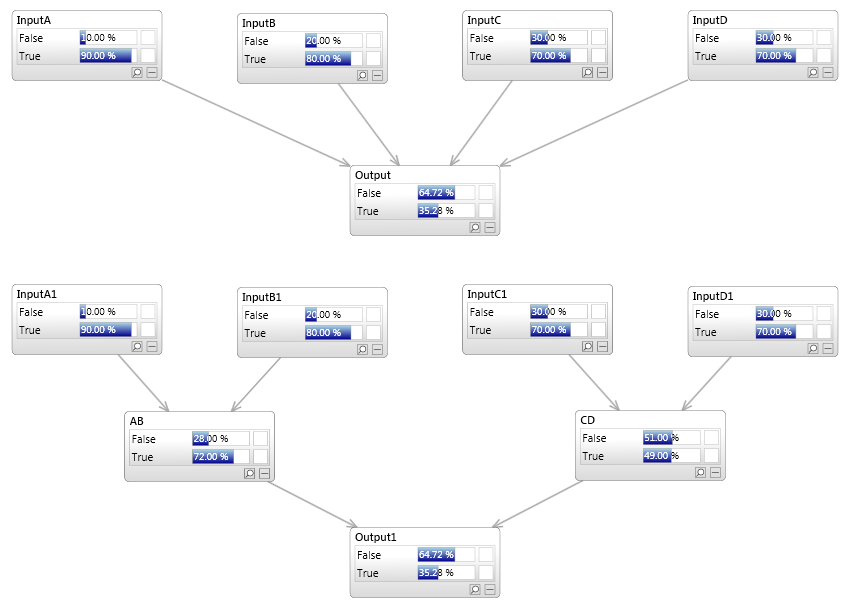Divorcing is a technique which allows nodes to be grouped hierarchically to avoid excessive inbound links.
The image below shows two networks. The bottom network is a divorced version of the top. Notice that the number of inbound links to the node Output1 has been reduced.

The number of parameters required for a discrete node grows exponentially with the number of parents. This is not only a problem for calculating queries, but also when defining the parameters.
If parameters are learnt from data, then a very large dataset would be required to justify each parameter.
If the parameters are entered manually by experts, not only would there be a large number of parameters to specify, but each one would be highly specific and difficult to specify.
In some cases, a divorced network is equivalent to the original network. An example of this is when the child node is a logical combination of the parents such as AND/OR, as in the example network shown above.
|
|
|---|
|
In some scenarios a network structure as used by a naive Bayes model is appropriate, and avoids the need for large numbers of parents. A hybrid approach may also be appropriate. |